Join the VIP Teacher Club!
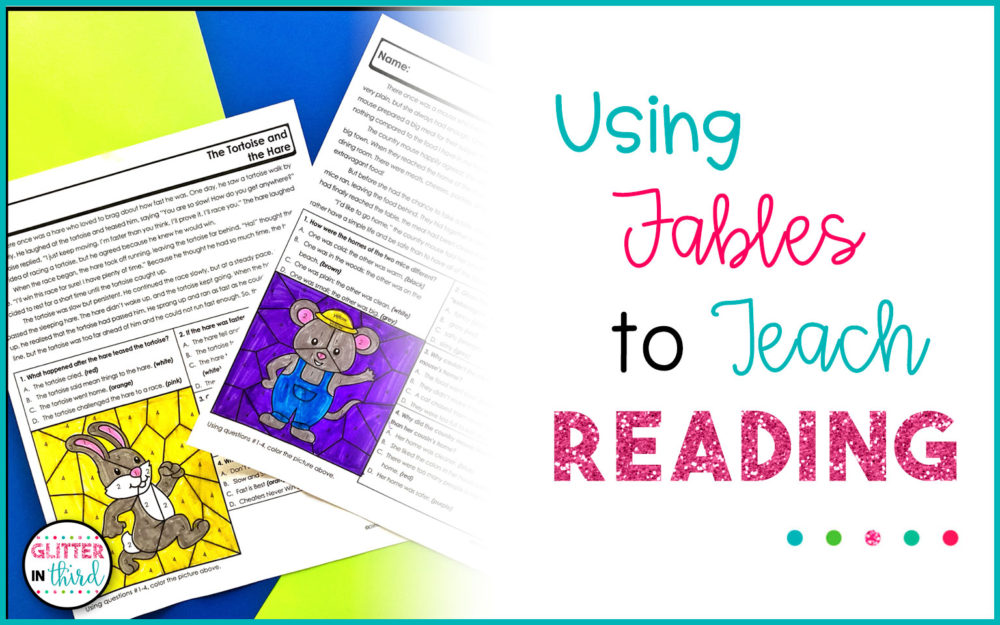
Looking for fable ideas?
It’s hard not to love a good fable!
They’re the perfect kind of stories to use when working on many specific reading comprehension skills, as well as come with great morals, values, and life lessons.
I have a few resources and activity ideas I’d love to share with you when you’re using fables in your classroom – including a brand new resource I can’t wait to let you in on! 🙂
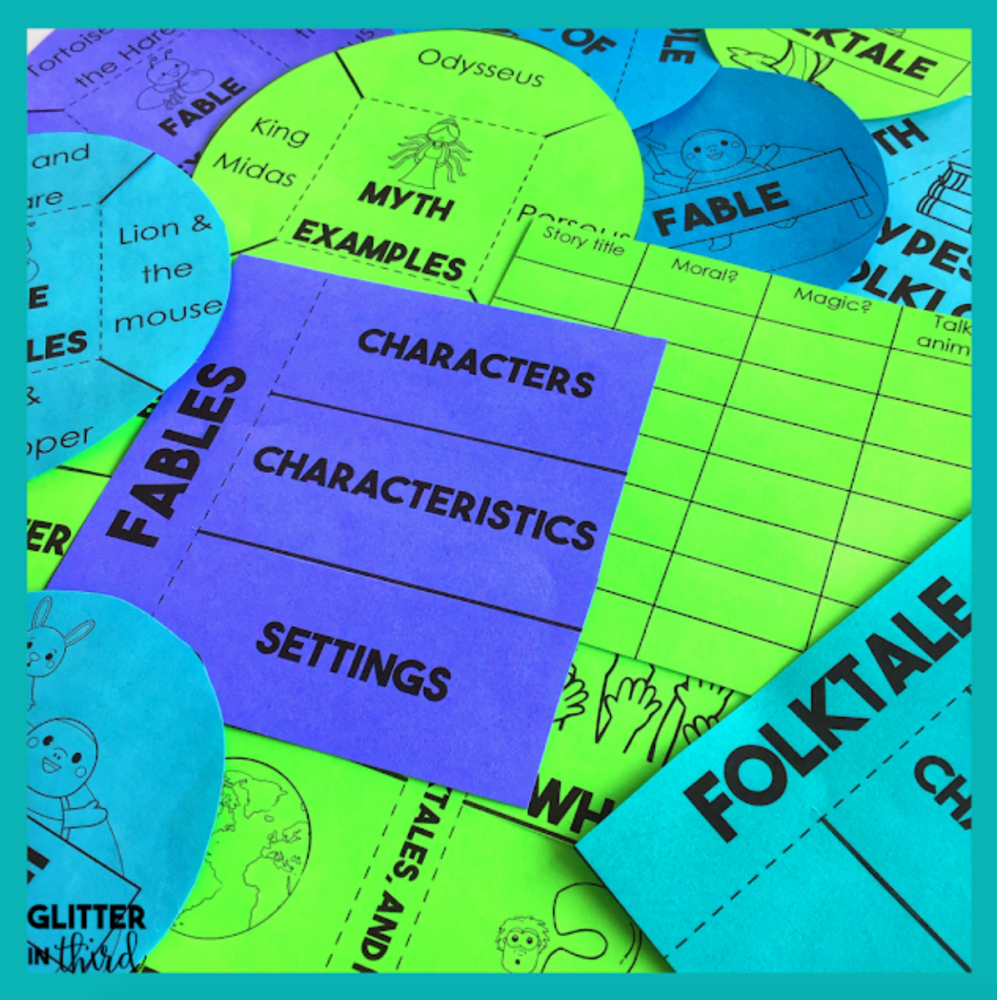
It’s pretty common for your students to ask you the difference once you start using these stories!
A fable is a short story that typically conveys some type of value, moral, or life lesson at the end.
The characters of these stories are almost always animals with human-like qualities, not mythical creatures.
It’s been said that fables use animals as characters to keep stories light and teachable to children, without insulting humans.
Fables exist in every culture, but are always fictional stories.
The most famous writer of fables that we are familiar with is Aesop.
Folktales feature humans as their characters and although they can also have a lesson at the end like a fable, they differ!
Sometimes it’s challenging to predict how a fable will turn out, but a folktale will always have a happy ending.
Interested in folktale lessons? Click here to check out my blog post on the BEST way to teach your folktale unit!
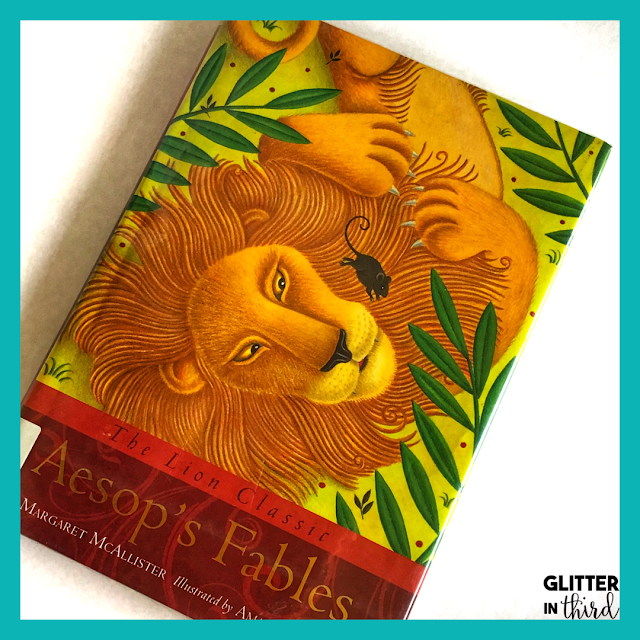
There are so many core components of comprehension – main idea, sequencing, character traits, cause and effect, summarizing, and context clues just to name a few!
Fables are wonderful stories to use for practicing these comprehension skills.
The main idea is typically the theme or “lesson learned” at the end of the fable.
For example, in “The Tortoise in the Hare,” slow and steady wins the race.
The events that occur throughout a fable are easy to arrange in order.
The animals in every fable always have very describable character traits.
And their actions always create positive or negative consequences, making cause and effect activities simple to dissect!
So not only are fables great to use to expose your students to different types of literature and some of our most well-known stories, they’re perfect to use for teaching all areas of comprehension!
Aside from teaching reading comprehension, here are some resources to help teach fables by themselves:
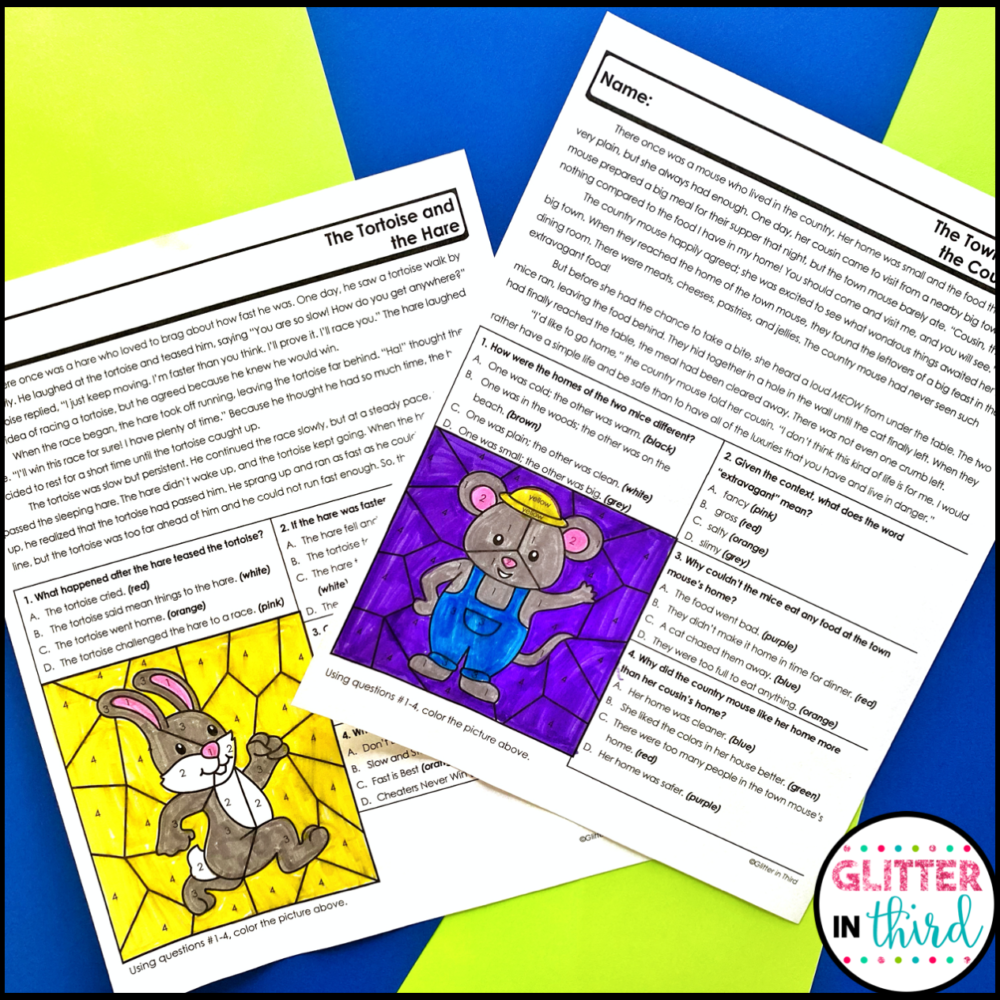
I have been so excited to share my newest color-by-number resource… fables edition! 🙂
This resource comes with 10 different color-by-numbers associated with traditional fables like “The Tortoise and the Hare,” “The Crow and the Pitcher,” and “The Town and the Country Mouse.”
As students read the fable, they’ll answer comprehension questions associated with the story.
Every answer will reveal a color that correlates with a number on the mystery picture.
There are 4 questions per passage, and each number is associated with a completely different part of the picture, so don’t worry – your students won’t be able to “guess” their way through the questions. 😉
All 10 of the passages come with an answer key.
You can find the fable color-by-numbers here!
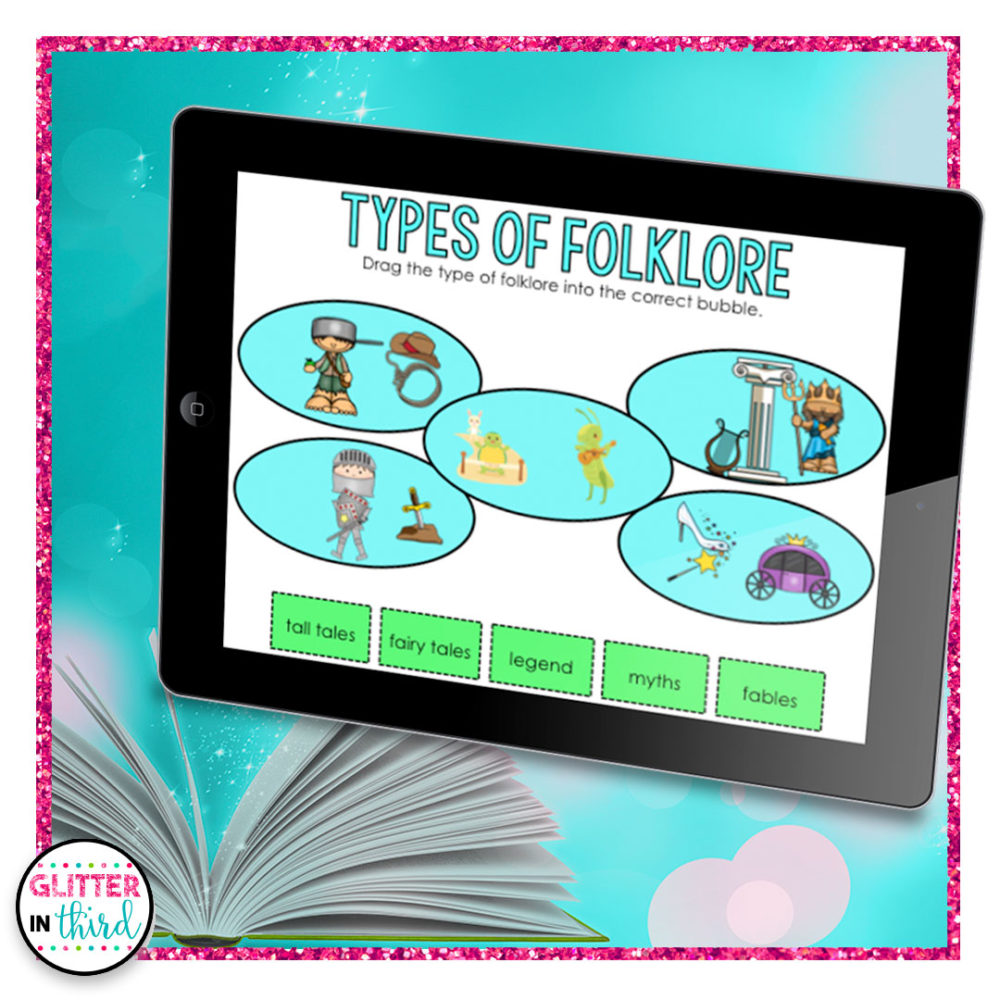
This digital resource is loaded with drag-and-drop activities, graphic organizers, and multiple short answer questions!
You’ll be able to focus on specific traits that fables possess and compare stories as you read.
You’ll also be able to compare specific characters from story to story, settings, and characteristics of the characters.
This digital resource can definitely supplement your other literature units including folktales and fairytales!
Your students will soon become familiar with sorting titles and be able to identify the different types of literature!
If you’d like to see a more detailed preview, you can find it here!
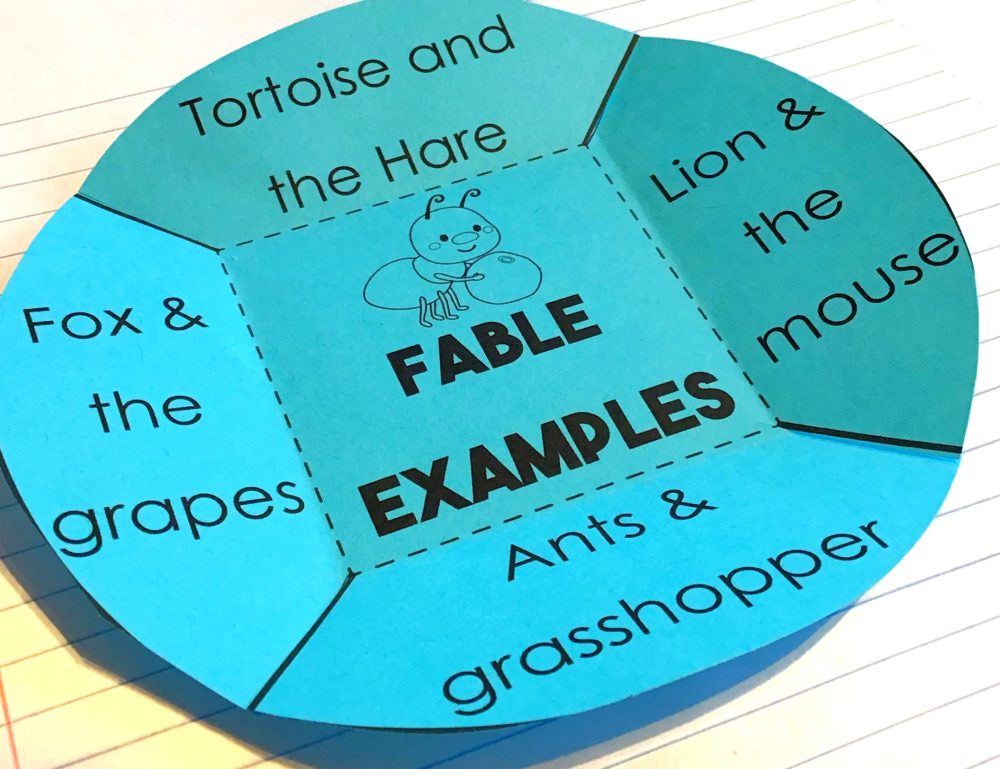
While this resource does address folktales and myths along with fables, I have always loved tying in specific stories when using it.
There are several famous examples of fables for you to reference like “The Tortoise and the Hare,” “The Fox and the Grapes,” “The Lion and the Mouse,” and “The Ant and the Grasshopper.”
Once you read the given fables, your students will be asked to identify key characteristics of characters, setting, and what the moral or lesson of the story was.
As always, my interactive notebooks come already differentiated, giving you 3 different ability levels to choose from for your students – manually filling in all notes, fill-in-the-blanks, or all notes provided.
Once printed, these will then be cut in half, giving you 2 notebooks per page – saving you time and paper. 😉
You can see more of what’s included in this interactive notebook here!
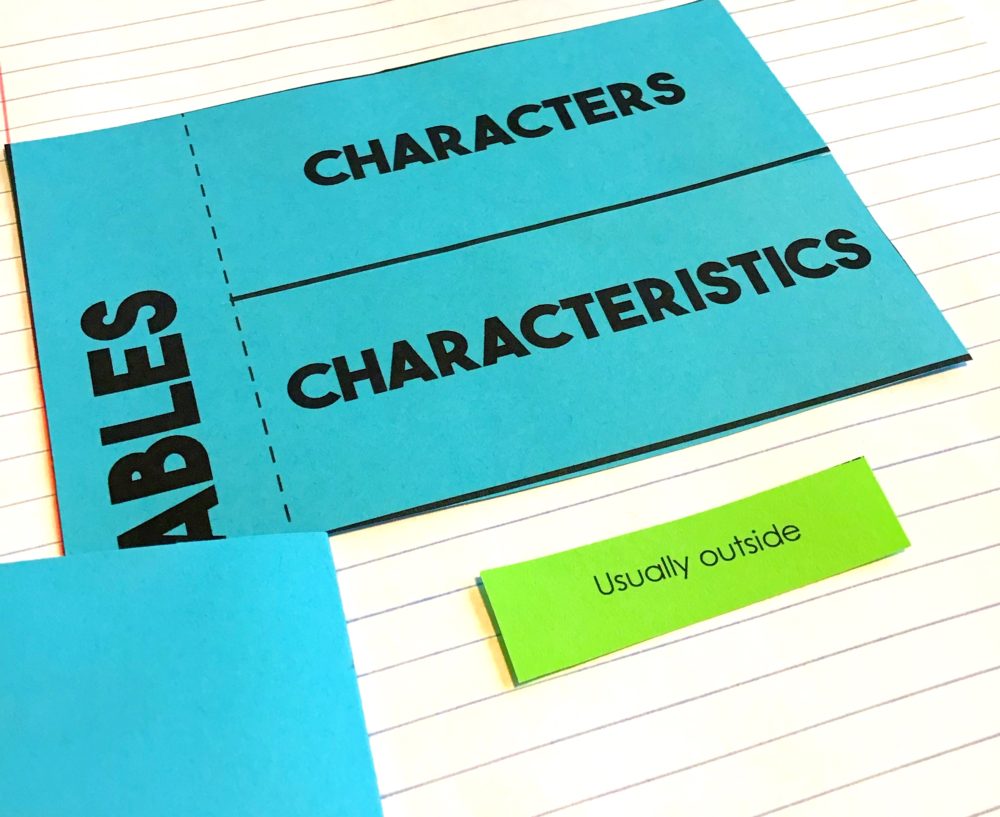
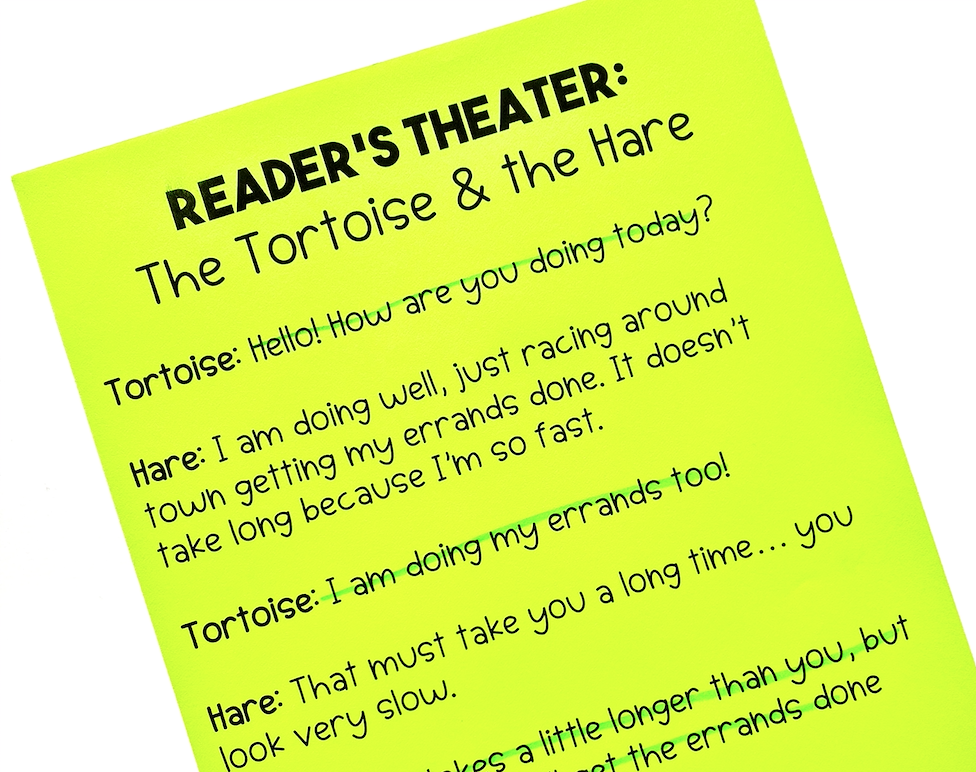
There are so many other standards you can teach with fables by using them in a short play or reader’s theater – speaking and listening, even social/emotional skills!
These kinds of activities would be perfect for small groups or partners, as most fables tend to have no more than 3 characters.
Assign a different fable to each small group to perform as a play or reader’s theater.
This allows each student to better understand character traits and the main idea/moral of the stories.
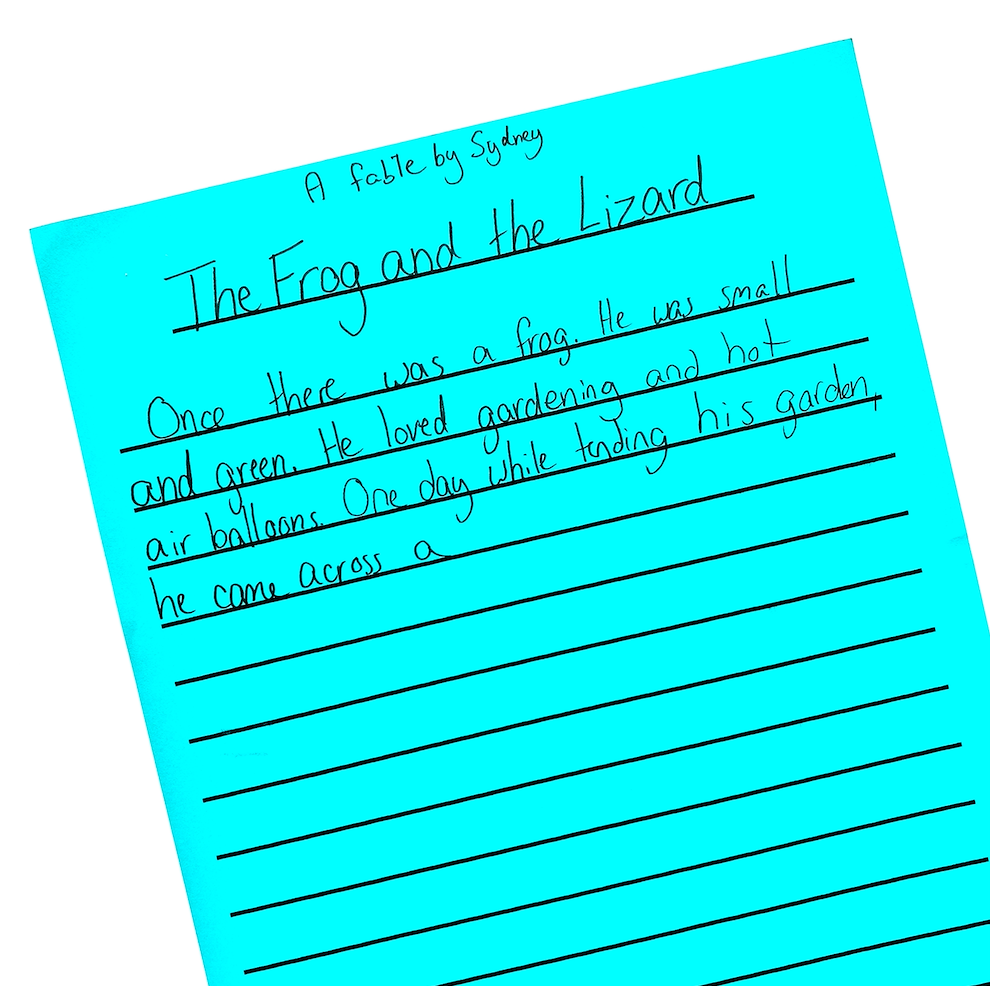
Okay, but really – how fun would this be for your students?! 🙂
Having your students write their own fables would be a perfect way to address several writing standards and understand the format of fables even more.
As a class, generate some ideas as to what morals, or life lessons, could be used in their own fables.
Then choose characters (kids love using animals!), give them their traits and a conflict, and then put it all together!
You could have your students go through the editing process with you, peer review, and then present their final fable.
If you’re not sure where to start or are needing some inspiration to begin your fables unit, the Library of Congress has almost 150 of Aesop’s fables for children for you to choose from here!
Don’t forget to search YouTube for some of your favorite fables, too!

Your students will enjoy switching up book read alouds and video read alouds. 🙂 Happy reading, hope you liked these fable ideas!
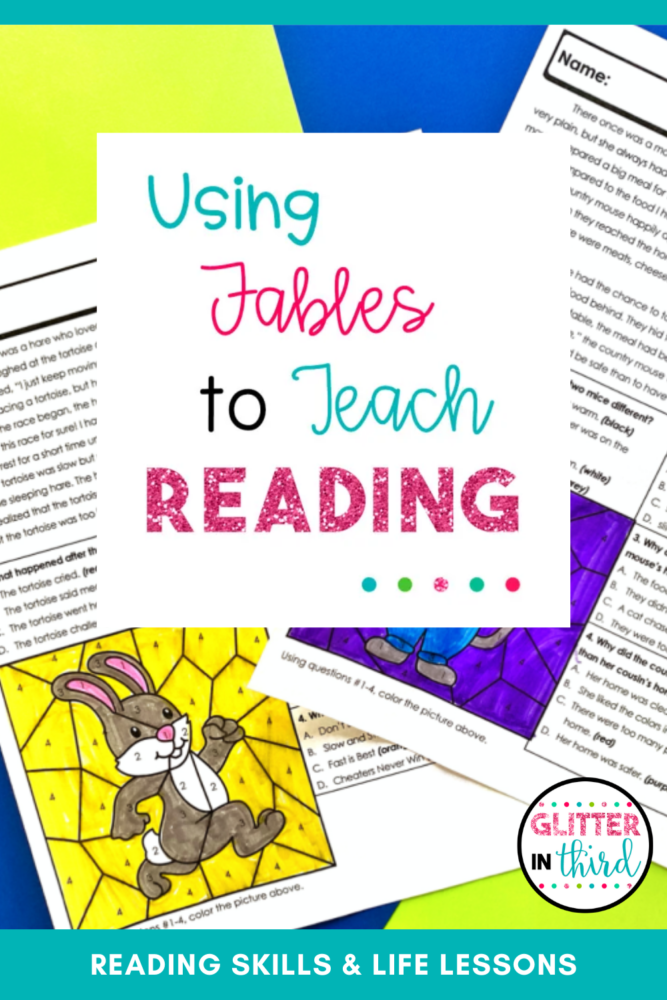

Hey there, I’m Kelly! I I love helping teachers save time with technology and resources so they have more hours in the day to spend with family and friends. Take a look around to find new ideas that you can implement in your classroom today!